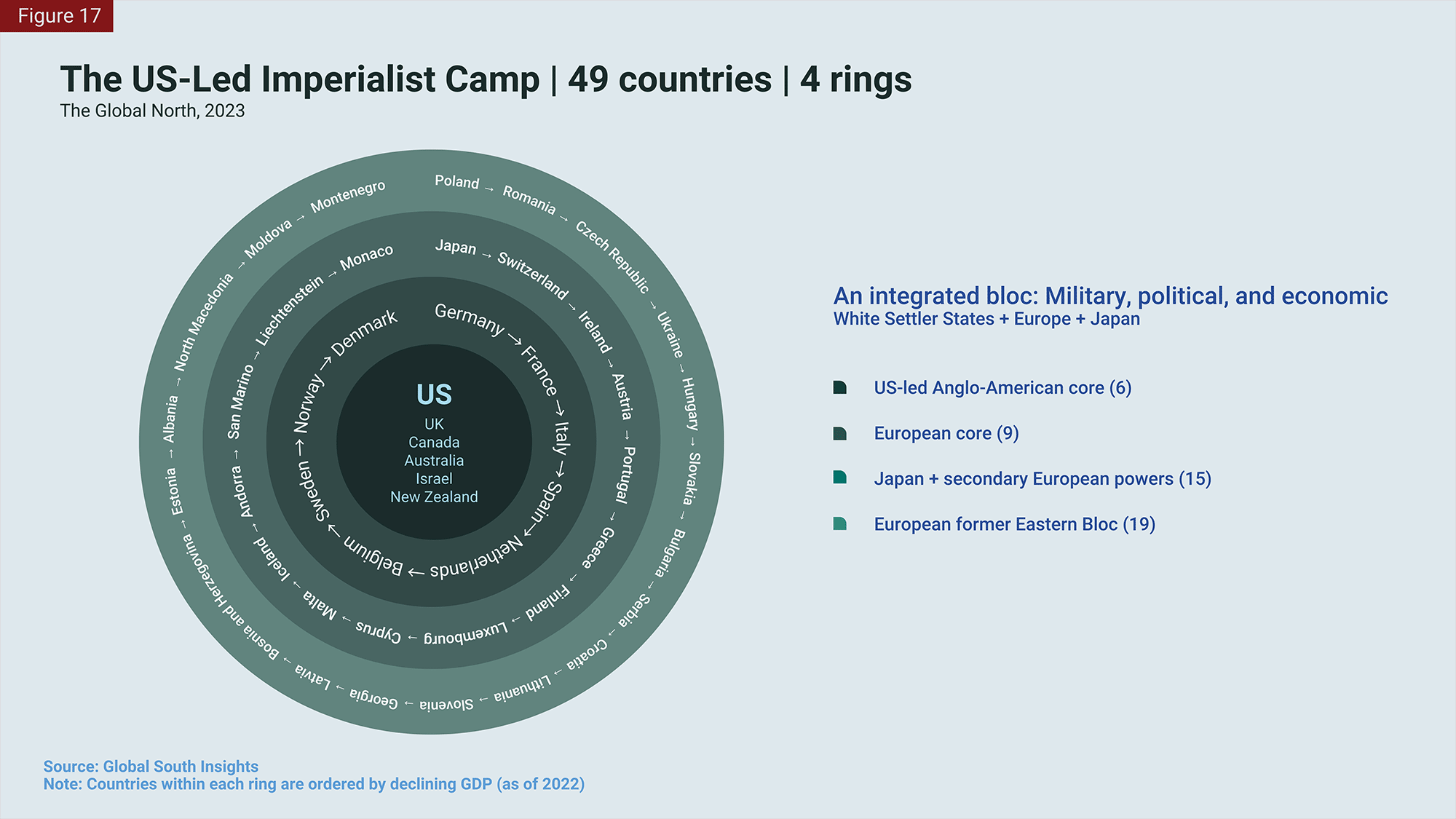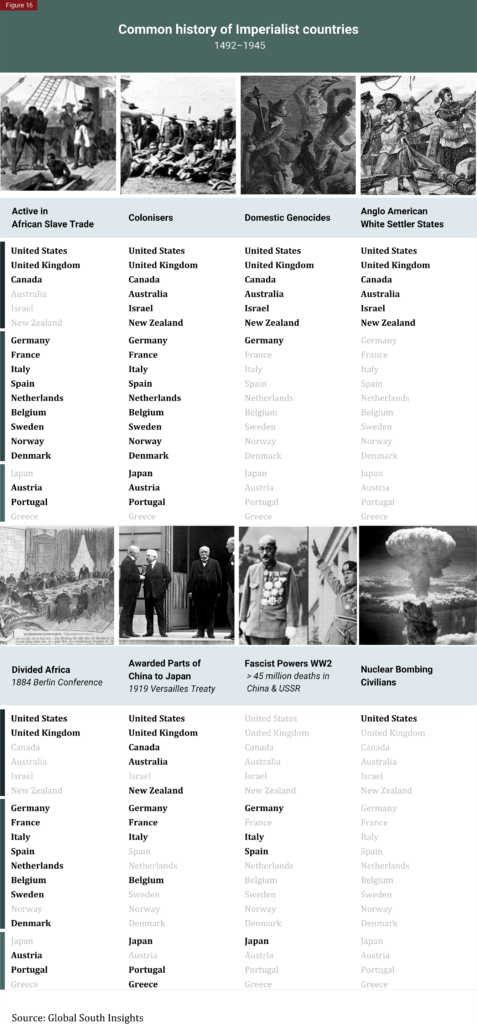More languages
More actions
(We need references) Tag: Visual edit |
(Chart) Tag: Visual edit |
||
| Line 1: | Line 1: | ||
[[File:1920px-North South divide.svg.png|thumb|The [[Global North and South|Global North]], often synonymous with the imperial core, in blue]] | [[File:1920px-North South divide.svg.png|thumb|The [[Global North and South|Global North]], often synonymous with the imperial core, in blue]] | ||
[[File:Imperial core rings.png|thumb|Diagram dividing the imperial core into four layers with the Anglosphere at the center]] | [[File:Imperial core rings.png|thumb|Diagram dividing the imperial core into four layers with the Anglosphere at the center]] | ||
[[File:Common history of imperialist countries.png|thumb|Shared Western history of [[Colonialism|colonization]] and [[genocide]]]] | |||
The '''Imperial core''', also known as the '''First World''' or '''Western world''', is a term which refers to [[Imperialism|imperialist]] countries which have historically benefited from [[unequal exchange]] with [[Imperial periphery|periphery countries]]. As a result of the core-periphery relationship, imperial core countries pressure periphery countries economically, politically and sometimes militarily to be [[Dependency|dependent]] of the imperial core countries. Some notable examples of countries in the imperial core include the [[USA]] and the [[United Kingdom of Great Britain and Northern Ireland|United Kingdom]], as both of these countries have benefited from imperialism. | The '''Imperial core''', also known as the '''First World''' or '''Western world''', is a term which refers to [[Imperialism|imperialist]] countries which have historically benefited from [[unequal exchange]] with [[Imperial periphery|periphery countries]]. As a result of the core-periphery relationship, imperial core countries pressure periphery countries economically, politically and sometimes militarily to be [[Dependency|dependent]] of the imperial core countries. Some notable examples of countries in the imperial core include the [[USA]] and the [[United Kingdom of Great Britain and Northern Ireland|United Kingdom]], as both of these countries have benefited from imperialism. | ||
Latest revision as of 13:59, 9 March 2024



The Imperial core, also known as the First World or Western world, is a term which refers to imperialist countries which have historically benefited from unequal exchange with periphery countries. As a result of the core-periphery relationship, imperial core countries pressure periphery countries economically, politically and sometimes militarily to be dependent of the imperial core countries. Some notable examples of countries in the imperial core include the USA and the United Kingdom, as both of these countries have benefited from imperialism.
First World[edit | edit source]
The first world first came about at the time of the Cold War, with the first ever recorded instance being in 1948. At the time, the first world was used to describe the hegemonic capitalist world in contrast to the USSR and Warsaw Pact nations, called the second world. The third world were the non-aligned countries, who took no clear stance towards either the USA or the USSR.
With time, the term "first world" evolved to mean the richest nations in the world, that profited from colonialism and imperialism.
